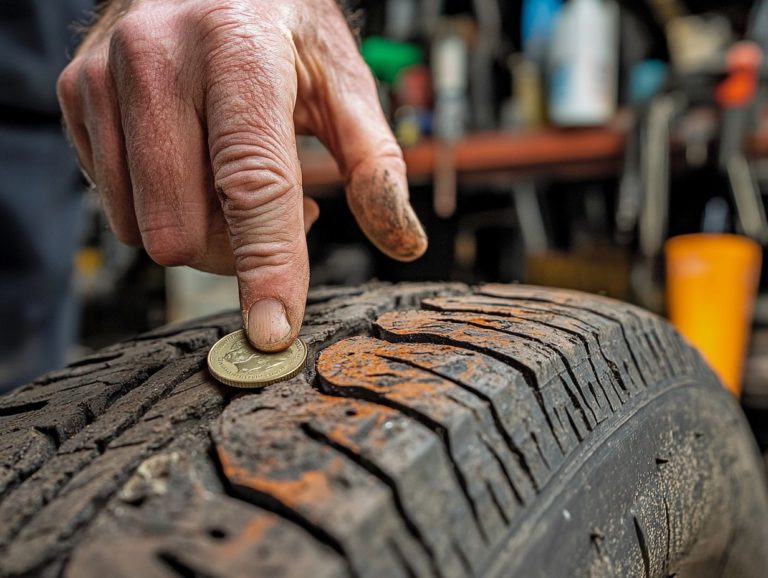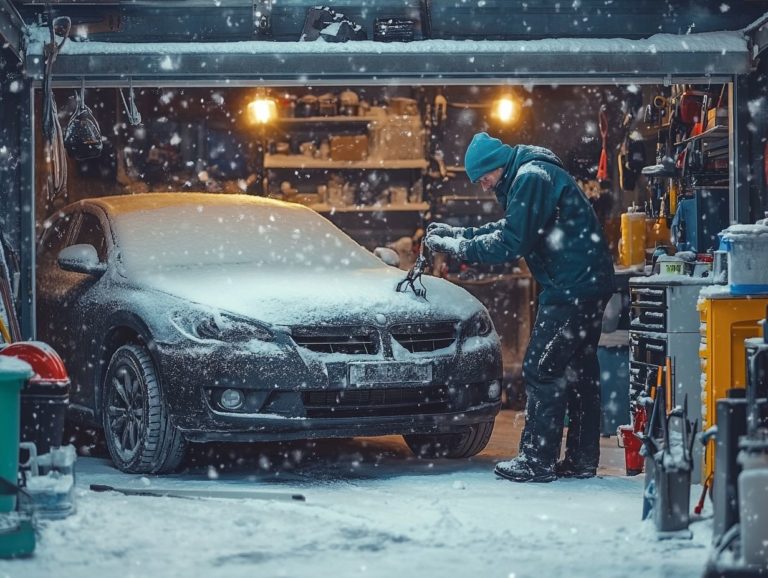How to Maintain Your Vehicle’s Safety Features
In today’s fast-paced world, prioritizing vehicle safety is your best defense on the road.
Thanks to advancements in technology, modern cars come with a wide range of safety features designed to protect you and your passengers. However, understanding these features, maintaining them, and knowing when to upgrade can feel overwhelming at times.
This article will break down the significance of vehicle safety features, offer practical maintenance tips, and guide you through testing and enhancing these vital components. Whether you re cruising through city streets or navigating rough terrain, ensuring your vehicle s safety systems are in peak condition is key to driving with confidence.
Contents
- Key Takeaways:
- The Importance of Vehicle Safety Features
- Regular Maintenance for Safety Features
- Common Safety Features and Their Functions
- How to Test Safety Features
- Upgrading Your Vehicle’s Safety Features
- Maintaining Safety Features in Extreme Conditions
- Frequently Asked Questions
- What are the most important safety features to maintain in my vehicle?
- How often should I check the brakes on my vehicle?
- What can I do to keep my tires in good condition for safety?
- How often should I replace my seatbelts?
- Why Are Airbags Important for Vehicle Safety?
- How Should I Maintain My Vehicle’s Lights for Safety?
Key Takeaways:
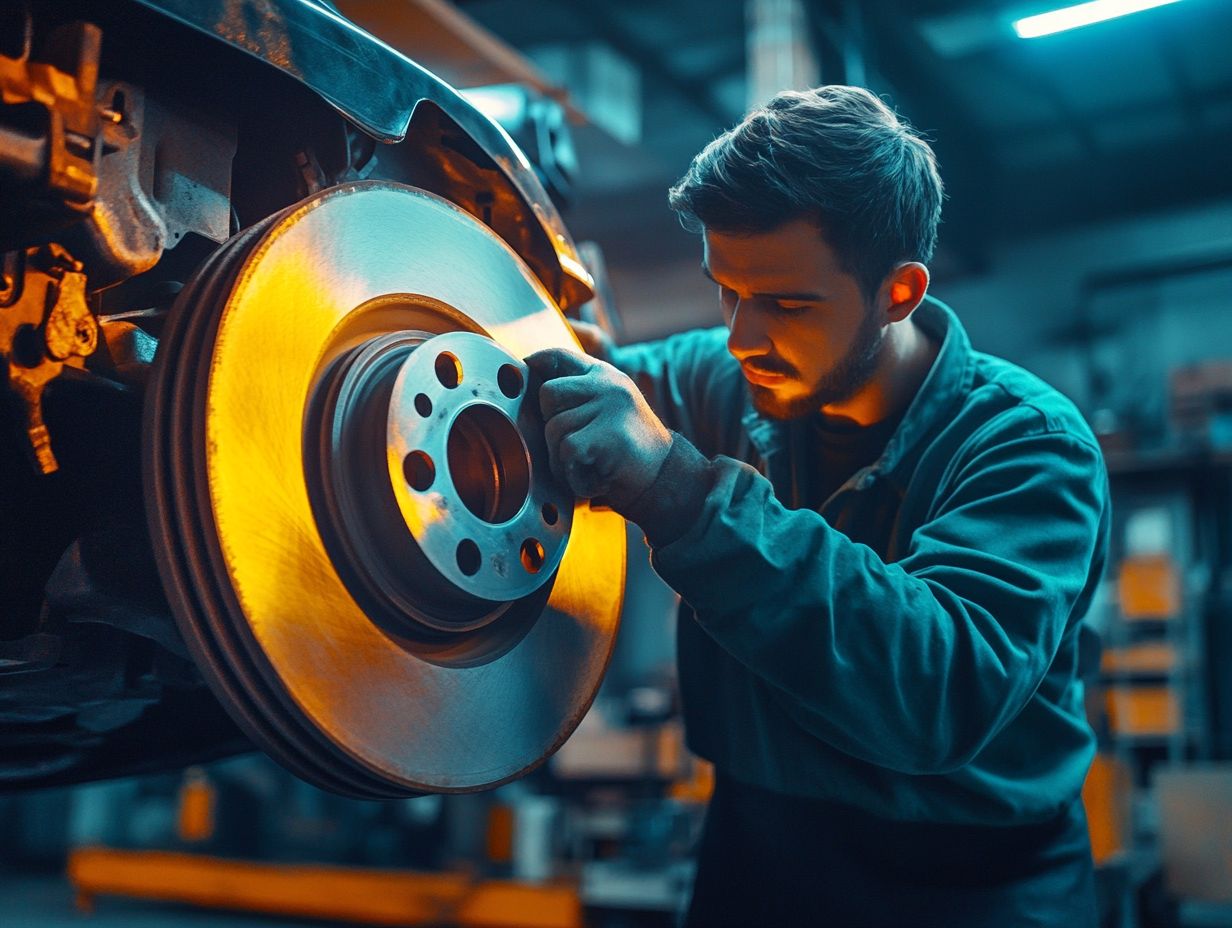
- Prioritizing vehicle safety is crucial for the well-being of yourself, your passengers, and other drivers on the road.
- Regular maintenance and replacement of worn-out parts are essential for the proper functioning of safety features.
- Understanding how safety features work, proper testing techniques, and upgrading options can greatly enhance the safety of your vehicle.
The Importance of Vehicle Safety Features
Vehicle safety features are key to keeping you safe and preventing accidents, serving as a crucial focus for any discerning car owner. When you consider advanced safety systems like traction control, airbags, and collision avoidance technologies, it becomes clear how these integrations significantly enhance overall safety, lower collision risks, and elevate your driving experience.
Recognizing their importance goes beyond mere compliance; it s about prioritizing the safety of everyone on the road. Regular maintenance and awareness of these systems are essential for maximizing their effectiveness and ensuring your vehicle performs at its best.
Why You Should Prioritize Safety
Prioritizing safety in your vehicle operation is essential not just for your personal well-being but also for your financial health. By maintaining top-notch safety features, you can significantly reduce the likelihood of collisions and accidents.
When you invest in reliable safety technologies like anti-lock braking systems and advanced airbag setups, you’re not only enhancing your personal safety but also setting the stage for lower insurance rates. Insurers often reward drivers who choose vehicles equipped with high-standard safety features, recognizing your commitment to responsible driving.
Vehicles designed with optimal safety in mind tend to offer improved fuel efficiency, allowing you to save on fuel costs over time. Ultimately, there’s a profound sense of peace that comes from knowing your vehicle is fortified with dependable systems, ensuring comfort on the road while minimizing your financial liabilities.
Regular Maintenance for Safety Features
Regular maintenance is crucial for ensuring that the safety features in your vehicle remain fully operational and effective, providing the necessary protection in case of a collision or any unexpected situation on the road.
This commitment involves adhering to a regular schedule for checking your vehicle, which includes routine inspections, timely oil changes, maintaining tire pressure, and checking essential components like battery terminals.
By dedicating yourself to regular upkeep, you can guarantee that your safety systems, such as braking and traction control, function at their best, ultimately enhancing both your safety and your vehicle’s performance.
Take action today! Check your vehicle s safety features and ensure they are in top shape for peace of mind on the road.
Checking and Replacing Worn-Out Parts
Checking and replacing worn-out parts is an essential part of your vehicle maintenance routine. This practice ensures that safety features operate effectively and can be relied upon in emergencies.
Among these components, brakes are paramount. Their effectiveness is directly linked to your safety on the road. Worn brake pads can significantly increase stopping distances, which could lead to accidents you d rather avoid.
Sensors that monitor tire pressure and stability are crucial for maintaining control during adverse conditions. If those sensors age, they might deliver false readings, jeopardizing your vehicle’s stability when it matters most.
Monitoring oil conditions is equally important. Dirty or low oil can lead to engine overheating, potentially disabling crucial safety systems just when you need them most.
Neglecting these vital elements can lead to vehicle malfunctions, putting not only your safety at risk but also that of others sharing the road.
Common Safety Features and Their Functions
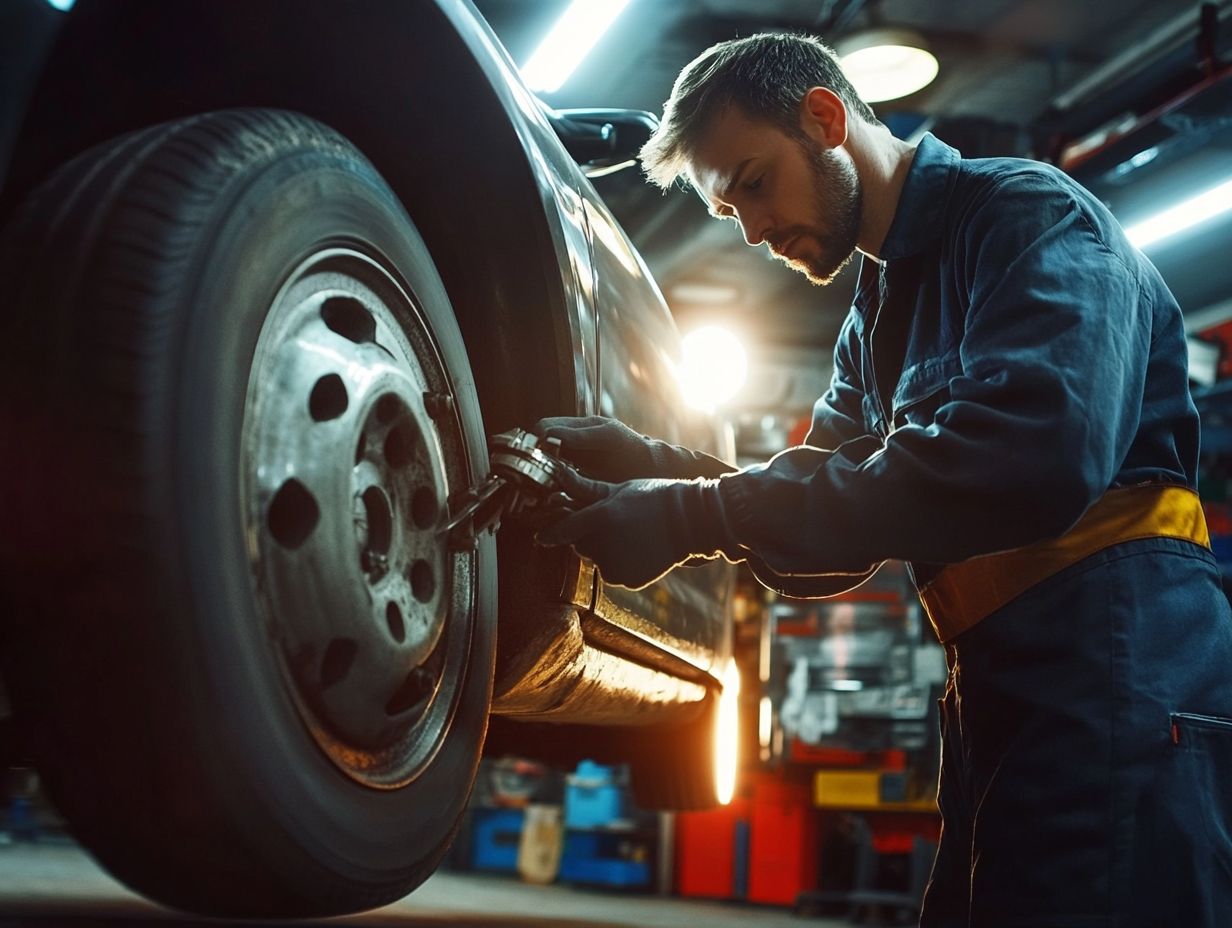
Understanding common safety features is vital for car owners. These systems are designed to protect you and your passengers while enhancing safety.
Features like airbags, collision avoidance systems, and traction control play pivotal roles in accident prevention and impact mitigation. They ensure your vehicle responds effectively in critical situations.
By familiarizing yourself with these safety technologies, you empower yourself to make informed decisions about maintenance and upgrades. This ultimately creates a safer driving environment for everyone.
Understanding How They Work
Knowing how safety features work can save lives and maximize their effectiveness for a safer driving experience.
Exploring the various technologies behind these features helps you appreciate their importance on the road. For example, advanced driver-assistance systems (ADAS) help prevent accidents using sensors and cameras to keep an eye on your surroundings.
Features like automatic emergency braking spring into action when they detect potential hazards, significantly lowering the risk of accidents. Lane departure warnings act as your co-pilot, alerting you if you drift unintentionally from your lane and fostering better control.
Meanwhile, adaptive cruise control maintains a safe distance from the vehicle ahead and adjusts your speed based on traffic conditions, enhancing overall road safety. Grasping how these systems work builds your confidence behind the wheel and promotes responsible driving habits.
How to Test Safety Features
Testing safety features is essential to your routine vehicle maintenance. It ensures that all systems operate correctly and efficiently when it matters most. Regular inspections are crucial. They quickly identify potential issues and troubleshoot any malfunctions in critical safety components, such as brakes and collision avoidance systems.
Master testing these features to enjoy peace of mind, confident that your vehicle is prepared to tackle emergencies effectively.
Proper Testing and Troubleshooting Techniques
Proper testing and troubleshooting techniques for your vehicle s safety features are essential for identifying and resolving potential issues before they jeopardize your safety.
With advanced safety systems like brakes and traction control now standard in vehicles, regular checks are more crucial than ever. It s important for you to familiarize yourself with these features and understand how they operate. Your owner s manual is a treasure trove of insights, detailing the specifics of each system, including warning indicators that signal a malfunction.
When in doubt, seek the expertise of a professional. This saves you time and mitigates the risks associated with improper handling. Comprehensive testing enhances safety and ensures that any potential issues are promptly addressed, maximizing your vehicle s performance and reliability on the road.
Upgrading Your Vehicle’s Safety Features
Upgrading your vehicle’s safety features is a proactive strategy that enhances safety and ensures you benefit from the latest technology.
As safety systems advance, integrating features like advanced collision avoidance and improved airbag systems can significantly impact accident prevention and occupant protection.
By aligning upgrades with your maintenance schedule, you can improve your vehicle’s safety and stay informed about the best practices for implementation.
Options and Considerations
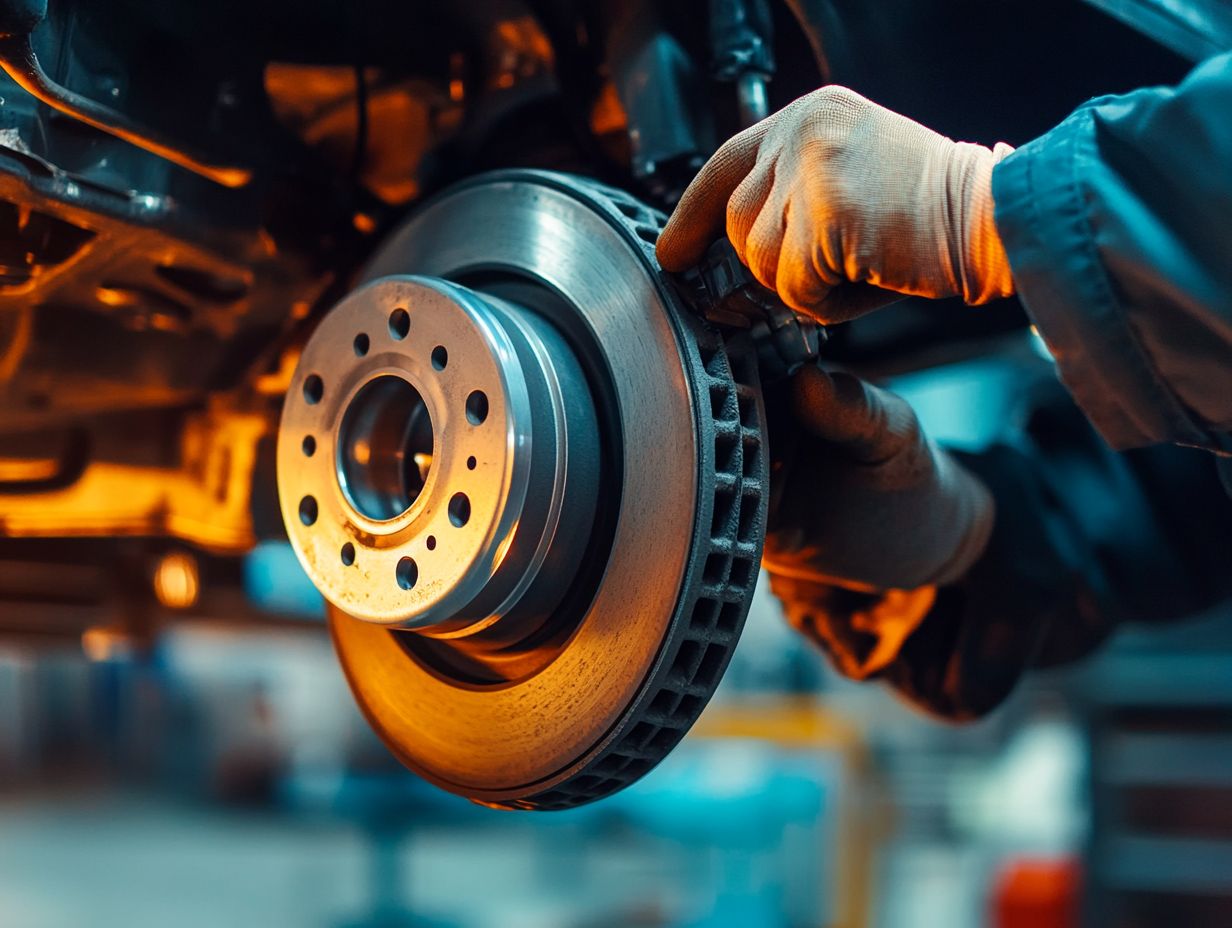
When you’re contemplating upgrades to your vehicle’s safety features, make sure to weigh the benefits and costs carefully your safety depends on it!
With automotive technology advancing rapidly, you’re faced with many options designed to boost safety and minimize the risk of collisions. Features such as lane departure warnings, automatic emergency braking, and adaptive cruise control are becoming increasingly popular. These systems use a blend of sensors and cameras to monitor your surroundings, significantly lowering the likelihood of accidents.
Integrating advanced safety systems that help drivers avoid accidents not only enhances your vehicle’s safety profile but also aligns with the rising trend of semi-autonomous driving. Evaluating these upgrades helps you make informed decisions that prioritize both safety and value.
Maintaining Safety Features in Extreme Conditions
Keeping your safety features in top shape is crucial for tackling any extreme conditions! This ensures your vehicle operates reliably, regardless of environmental challenges like harsh weather or rugged terrain.
Factors like heavy rain, snow, or rough roads can impact the performance of essential safety systems, such as traction control and brakes. Regular inspections and appropriate maintenance become even more critical.
By taking proactive steps to maintain your vehicle’s safety features, you enhance your own safety and that of everyone else on the road.
Tips for Harsh Weather and Terrain
When navigating through harsh weather or challenging terrain, implementing specific vehicle maintenance tips can significantly boost the effectiveness of your safety features.
Regularly checking essential components helps you sidestep common winter pitfalls. For example, ensure your wiper fluid is topped off and suitable for low temperatures to maintain visibility during snowstorms or sleet.
It’s crucial to inspect your tire condition; tires with adequate tread depth provide the grip you need on icy surfaces. Don t forget to examine your battery terminals and clean off any corrosion, as cold weather can seriously impact battery performance.
Taking these proactive steps safeguards your vehicle s operational integrity and promotes safer journeys for everyone on the road.
Frequently Asked Questions
What are the most important safety features to maintain in my vehicle?
The most important safety features to maintain in your vehicle are the brakes, tires, seatbelts, airbags, and lights.
How often should I check the brakes on my vehicle?
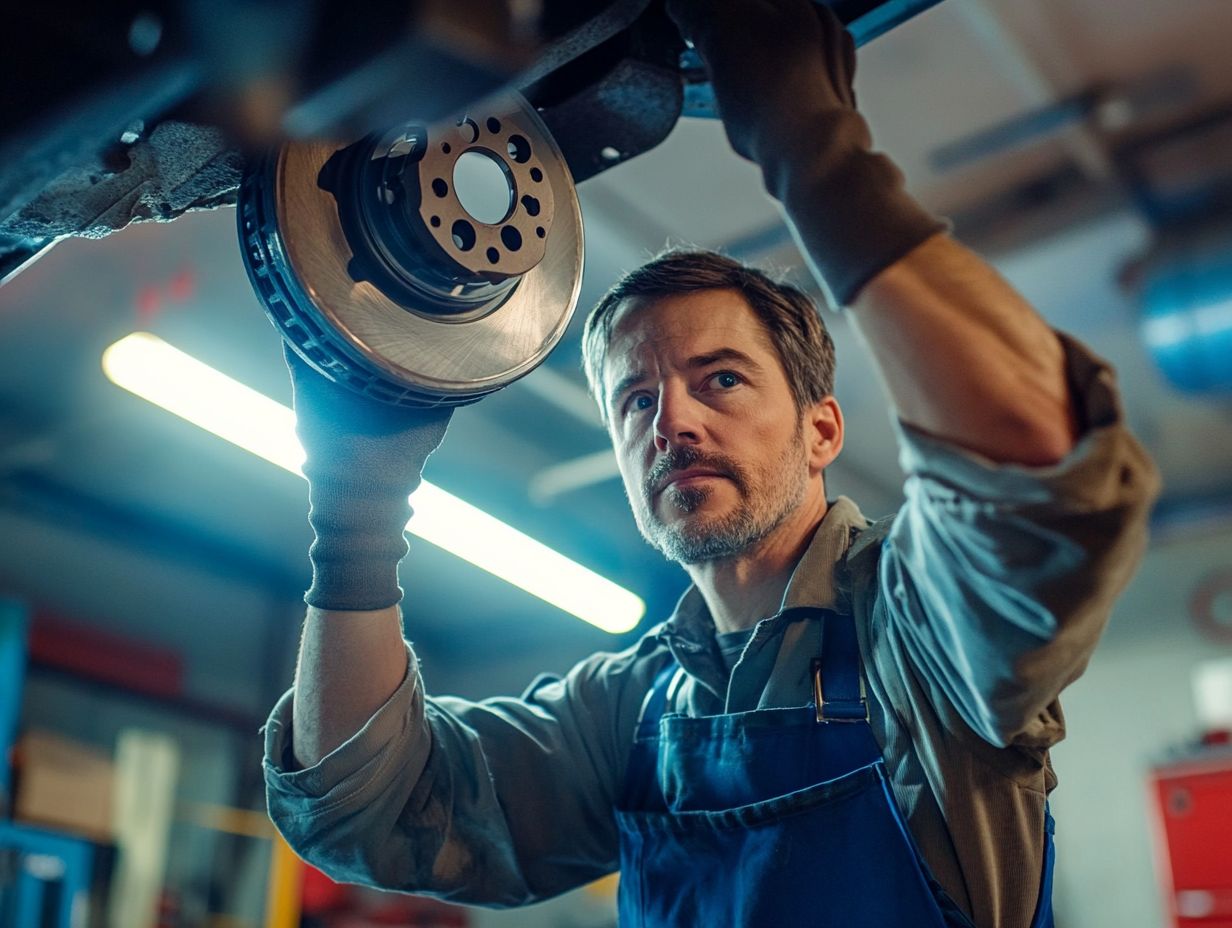
It is recommended to check your brakes every 6 months or 6,000 miles, whichever comes first. However, if you notice any signs of brake wear or hear unusual noises, it is important to get them checked immediately.
What can I do to keep my tires in good condition for safety?
Regularly check your tire pressure, rotate your tires every 5,000-8,000 miles, and visually inspect for any signs of wear or damage. It is also essential to replace your tires when they are worn down to the minimum tread depth.
How often should I replace my seatbelts?
Seatbelts should be replaced if they are damaged or not working properly. It is recommended to get them checked every year or during each oil change, and replace them every 10 years.
Why Are Airbags Important for Vehicle Safety?
Airbags play a crucial role in keeping you safe during a crash! They reduce the impact of collisions and can save lives.
How Should I Maintain My Vehicle’s Lights for Safety?
Regularly check that all vehicle lights are working. Replace any burnt-out bulbs immediately.
Also, clean your headlights and taillights often to ensure maximum visibility.


